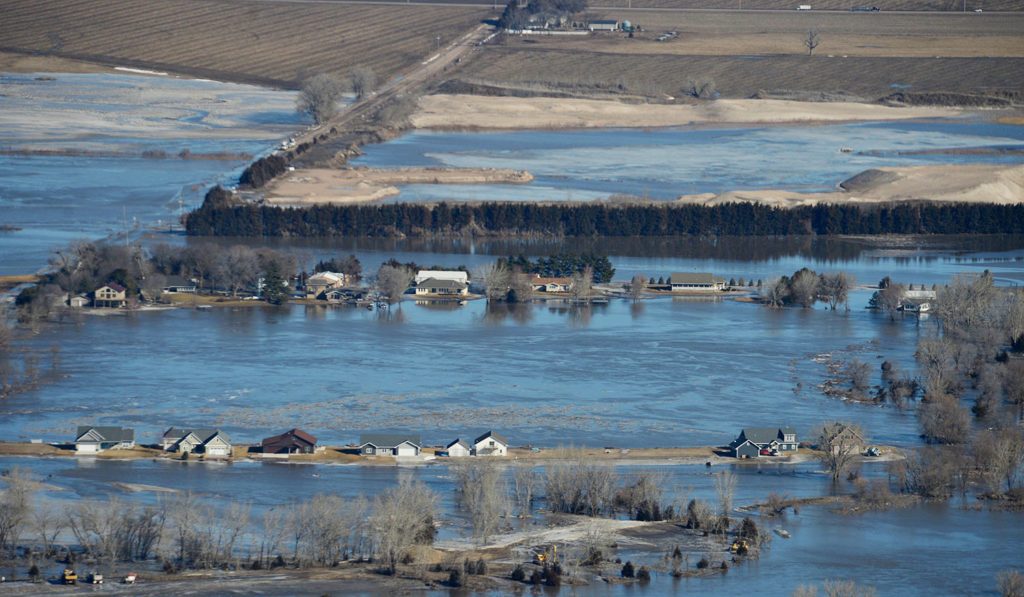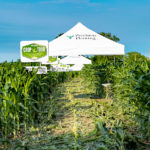How To Recover Your Fields After The 2019 Winter Floods
At AGCO, our employees and dealers have been closely monitoring the impact of the floods that affected many parts of the United States. While some farmers deal with flooding on an annual basis, the catastrophic Spring 2019 floods are affecting farmers that don’t typically have this problem. In this blog, we discuss how to handle debris left in your fields, erosion, and deposition, and regaining soil health when the floodwaters recede.

How To Recover Your Fields After The 2019 Winter Floods
At AGCO, our employees and dealers have been closely monitoring the impact of the floods that affected many parts of the United States. While some farmers deal with flooding on an annual basis, the catastrophic Spring 2019 floods are affecting farmers that don’t typically have this problem. In this blog, we discuss how to handle debris left in your fields, erosion, and deposition, and regaining soil health when the floodwaters recede.Debris: Trash, trees, and crop residue left in piles and scattered throughout fields will be just some of the debris the flooding may leave in your fields. In general, trees and debris can be managed with tractors equipped with grapple-style loaders. The trash and trees are usually bothersome because they must be collected and disposed of, but the crop residue stripped in some areas and piled in others is very problematic. Crop residue is beneficial to the next crop if left in place because it acts as a mulch to help reduce moisture loss, and provides nutrients and organic matter back to the soil as it breaks down. When crop residue is left piled, soils remain cold and wet under the residue mat, impeding equipment operation and crop growth and development. In the subsequent crop, nitrogen (N) deficiency will occur due to N immobilization by the microorganisms that are working to break down the residue. As a result, either removing the residue piles from the field or finding a way to spread it back out is required to improve yield in previously flooded fields. Once residue has been spread out and soils have begun to dry, incorporation is important to get the breakdown process started. A disk chisel with twisted shovels, or similar tillage tool, followed by a land finisher is a good system to employ.
Erosion and Deposition: Likely there will be areas within fields that have been severely eroded and other areas with significant deposits. Keep in mind, the deposits usually have come from upstream, likely inconsistent with the soil that was originally in the field. Usually, these deposits are a combination of sand and silt. When deposits are less than six inches deep, they can be incorporated using a chisel plow with twisted shovels or similar tool. Deposits greater than six inches should be moved off the field or spread as uniformly as possible. This can typically be accomplished with a front-end loader, box scraper or land leveler. Gullies can typically be worked down with a chisel plow or disk, but depending on depth, may need to be filled in. Avoid filling gullies with deposits because crops typically will not do well in these alluvial soils and the sandy deposits will easily be washed away again.
Soil Health: Submerged fields can have a negative effect on soil health because beneficial organisms can have their populations significantly reduced, or, be killed entirely. Fields that have been submerged for a week or more will have lost most of the beneficial aerobic bacteria and mycorrhizal fungi. Bacteria have many positive benefits like the breakdown of organic matter to release nutrients or inoculation of legume roots to produce nitrogen. Mychorrhizae fungi extend the reach of plant roots providing better uptake of nutrients and water. After soils are dry enough for tillage, chisel plow or field cultivate soils to provide aeration. Apply species-specific Rhizobium seed treatment when planting legumes into previously flooded fields to resupply the soil with the beneficial bacteria. While mycorrhizae populations will need to recover naturally, a farmer can accelerate the process by keeping plants growing. Consider planting cover crops after the cash crops to accelerate the re-colonization of mycorrhizae.
(U.S. Air Force photos taken by Senior Airman Jamie Titus/Released)
Authors:
Darren Goebel,
Director, Farm Services and Agronomy
Tom Draper,
Marketing Manager, Seeding and Tillage



